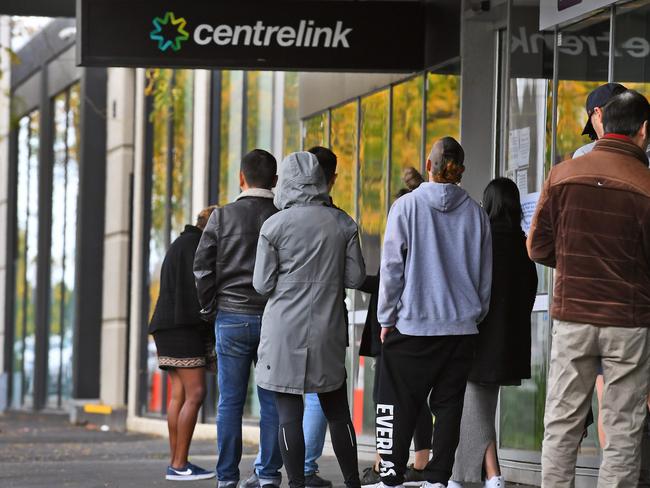JobKeeper review: How program encouraged sacking of casuals
Did you miss out on JobKeeper? New figures reveal casual workers were more likely to be sacked if they were casual.
JobKeeper acted as a “strong incentive” to sack casual workers, a think tank has found.
Workers who missed out on the JobKeeper wage subsidy were disproportionately sacked during the coronavirus pandemic, according to findings from the Federal Government’s JobKeeper review.
The number of ineligible employees still working for a business receiving JobKeeper halved come May.
Casuals who had worked for their boss for less than a year and temporary visa holders were ineligible for the $1500 fortnightly payment when restrictions took hold.
“For organisations that are JobKeeper recipients, there was an initial 5 per cent drop in jobs held by eligible employees in the first fortnight after JobKeeper was introduced, but these jobs have since been fully restored,” the review states.
“The job losses have been largely borne by ineligible employees in organisations that are JobKeeper recipients which fell by half between mid-March and the end of April.”

The Australia Institute senior research fellow David Richardson said up to 723,000 people could have lost their job because of the JobKeeper program design.
“There is a strong incentive in JobKeeper to dismiss non-eligible workers,” Mr Richardson said.
“Workers who do not attract a subsidy are much more expensive to retain, plus the rules say all eligible workers must be retained.
“Businesses wanting to minimise costs will therefore get rid of ineligible workers.”
He called on the Government to offer more assistance to casuals and nonresident workers.
Scott Morrison this week announced JobKeeper 2.0, which will provide subsidies until March 2021 for eligible businesses that can meet the 30 per cent turnover reduction test.
Two payment tiers will be introduced from the first week in October.
The top rate will be reduced to $1200 a fortnight, while those working less than 20 hours a week will be eligible for a $750 payment from October to December.
Between January and March those payments will again lower to $1000 for the full rate, which requires 20 hours of work a week or more, and $650 for less than 20 hours a week.



